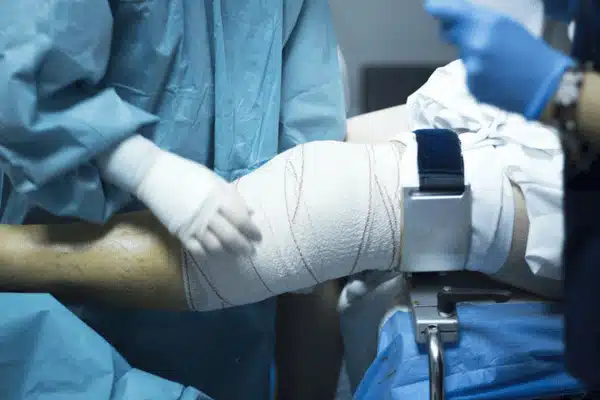
Total joint replacement surgery transforms lives. This surgical procedure removes damaged joint surfaces and replaces them with artificial components made from metal, plastic, or ceramic materials. The goal is simple: relieve pain and restore mobility for people suffering from severe arthritis or joint damage.
Over 700,000 Americans receive knee replacements each year. When conservative treatments fail, joint replacement surgery offers hope for a return to active, comfortable living.
An orthopaedic surgeon reviews treatment options, often trying medication or a partial joint replacement before recommending a full total joint replacement. During orthopaedic surgery the surgeon replaces worn bone ends with smooth implants that relieve symptoms and relieve pain, so patients no longer feel pain at every step.
The recovery process begins with physical therapy and continues with outpatient physical therapy to rebuild strength for daily living. For most, total joint replacement or joint replacement surgery restores daily living. Athletes find total joint replacement or joint replacement surgery can revive recreational goals.
An orthopedic surgeon clears damaged bone from the knee and prepares an artificial joint. This total joint replacement removes worn surfaces. In a total joint replacement the surgeon caps femur and tibia of the knee, adds a spacer, reshapes the patella.
The knee is the site for total joint replacement surgery though hips and shoulders use similar methods. Patients with pain discuss joint replacement surgery to choose partial or full joint replacement. When arthritis affects the whole joint, a full total joint replacement is chosen to relieve pain and restore motion. After total joint replacement, physical therapy starts within a day to protect the knee and speed healing.
Most people with knee replacements regain daily function, and many later schedule knee replacements. Rare complications such as infection, clots, or heart attack call for attention if swelling, chest pressure, or other symptoms appear. With rehab a second total joint replacement often feels easier, proving comprehensive joint replacement follow up can renew daily living.
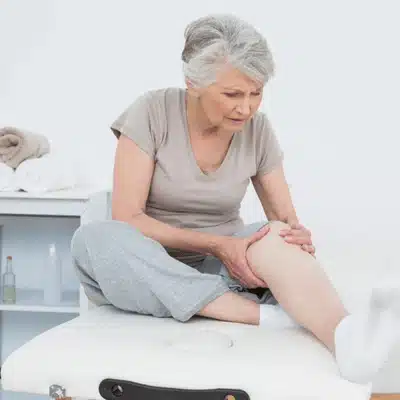
Joint pain from arthritis often leads to replacement surgery when joint replacement becomes the best way to relieve pain. Osteoarthritis erodes cartilage until bone-on-bone friction creates a damaged joint, while rheumatoid arthritis inflames tissue.
Doctors first try nonsurgical treatments such as medications, physical therapy, injections, and activity modifications. These conservative therapies may ease discomfort, especially when a physical therapist strengthens surrounding muscles.
When pain persists and daily tasks suffer, an orthopedic surgeon may suggest joint replacement. Age is less important than function; athletes can need better joints in midlife because intense sport accelerates wear. If mobility stays limited despite physical therapy, nonsurgical treatments, and other conservative steps, replacement surgery offers a realistic path to restore mobility and significantly reduce pain.
Your surgical team evaluates your overall health before the procedure. This assessment may include blood tests, heart monitoring, and joint imaging. Some patients benefit from "prehab" - working with a physical therapist to strengthen leg muscles before surgery.
Strong muscles around your joint support better outcomes. Your physical therapist may prescribe specific exercises to build strength and improve flexibility before surgery.
Managing other health conditions becomes crucial before surgery. Diabetes must be well-controlled to promote proper healing. Your surgeon may delay surgery until these conditions are stable.
Home preparation makes recovery smoother. Remove trip hazards, set up a sleeping area on your main floor, and gather helpful items like shower chairs or raised toilet seats. Plan for someone to drive you home and assist during your first few weeks of recovery.
Stock up on easy-to-prepare meals and ensure medications are readily available. These simple modifications create a safer environment for your recovery.
Your surgeon provides specific instructions about eating, drinking, and medications before surgery. You typically need to stop eating and drinking by midnight before surgery to prevent complications from anesthesia. Following these guidelines carefully helps prevent complications and ensures the best possible outcome.
Total joint replacement surgery usually lasts a few hours in a hospital or surgery center. Under general or spinal anesthesia, the surgeon removes the damaged natural joint and inserts a total joint implant, most often a total knee, although other joints may need attention after years of normal wear. Antibiotics are given, and future treatment options are reviewed before the knee is closed.
The patient receives general anesthesia so they do not experience pain. In orthopaedic surgery for a total joint replacement procedure, the surgery site is scrubbed sterile, draped, and an incision is made over the knee joint. The surgeon gently separates tissue layers, exposing the knee joint surfaces for joint replacement, then prepares the joint implant.
During a joint replacement procedure, your surgeon removes damaged joint surfaces using precision tools. The joint replacement process involves surgical tools like saws and instruments that shape bone ends perfectly. Accurate preparation ensures each joint replacement implant fits securely, promoting smooth movement after joint replacement and maximizing the long-term success of your joint replacement surgery.
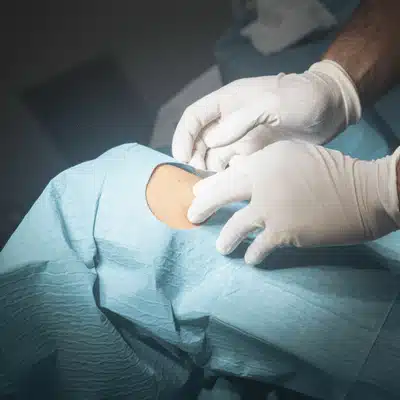
The prosthetic components get secured to your bones, either with special cement or through press-fit designs that allow bone growth into the implant. For total knee replacements, the surgeon may resurface the cap of your knee with a plastic component, depending on the condition of your patella and surgeon preference. Hip replacements involve replacing both the ball and socket portions of the joint.
The surgeon tests the joint for proper fit and movement before closing. Once the artificial joint is in place and properly aligned, the surgeon closes the incision with sutures or staples. A sterile dressing protects the surgery area.
You wake up in a recovery room where nurses monitor your vital signs and manage any immediate pain or nausea. Many patients find post-surgical pain more manageable than their pre-surgery joint pain.
Robotic assisted surgery represents a major advancement in total joint replacement. These systems create 3D models of your joint and guide surgeons with millimeter precision. Robotic assistance helps ensure optimal implant positioning and alignment, potentially improving long-term outcomes.
The robot doesn't replace your surgeon but acts as a sophisticated tool. Your orthopaedic surgeon controls the system throughout the procedure. This technology may improve implant longevity.
Custom 3D-printed implants offer another innovation. These patient-specific prosthetic implants match your unique anatomy, potentially providing better fit and more natural movement compared to standard sizes.
Smart implants with embedded sensors are emerging technology. These devices can monitor joint function and wirelessly transmit data to your surgical team, allowing for more personalized recovery monitoring.
Minimally invasive approaches use smaller incisions and muscle-sparing techniques. These methods often result in less discomfort, faster healing, and quicker return to normal activities. Surgeons can move muscles aside rather than cutting through them.
Enhanced pain management combines regional anesthesia with targeted medications. This multimodal approach helps patients wake up more comfortable and participate in therapy sooner with less pain overall. Nerve blocks provide targeted numbness to the surgical area.
Every surgical procedure carries risk, and joint replacement surgery is no exception. Whether a partial joint replacement, total joint replacement, or newer robotic assisted surgery, infection is rare because the orthopaedic surgeon and team follow sterile steps.
Blood clots can still form after total knee replacements or a total hip replacement, so compression sleeves and medication are prescribed. Nerve injury is possible but uncommon, and blood vessels can be nicked during joint work, although surgeons act quickly to protect them.
Over time wear may loosen an artificial joint and lead to revision joint replacement surgery. Dislocation sometimes affects hips, and scar tissue can limit motion after total knee replacements. Robotic assisted surgery helps align implants to mimic motion and extend implant life, yet even total knee replacements and other total joint replacement devices may need attention later.
For most patients the chance to relieve pain and regain function outweighs the risks of total joint replacement or joint replacement surgery.
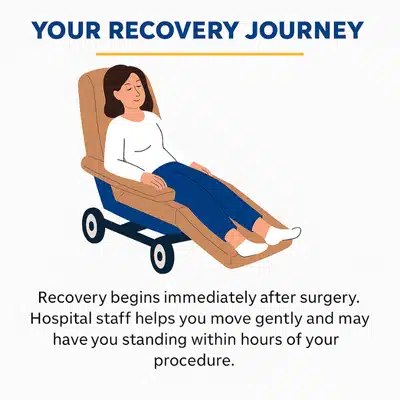
Recovery begins immediately after surgery. Hospital staff helps you move gently and may have you standing within hours of your procedure. Early mobilization prevents stiffness and promotes healing.
The healing process follows predictable stages. Initial inflammation peaks within the first few days, then gradually subsides. New tissue forms around your implant over several weeks to months.
A lot of patients go home the same day or after one night in the hospital. You'll use a walker or crutches initially, then progress to a cane as your strength returns. Most people walk without assistance within several weeks.
Working with a physical therapist is crucial for optimal recovery. Therapy typically starts within the first weeks and focuses on restoring range of motion and strengthening surrounding muscles. Your therapist teaches safe movement patterns and helps you return to daily activities.
Recovery time varies among patients. Younger, healthier individuals often recover faster than older patients with multiple health conditions.
The first few weeks involve managing swelling, preventing blood clots, and monitoring the surgery site for signs of infection. Ice application helps control swelling. Gentle exercises prevent stiffness and promote circulation.
Pain management remains important throughout recovery. Your team provides medications and techniques to keep you comfortable while encouraging appropriate activity levels. As healing progresses, pain medication needs typically decrease.
By several hours to several weeks after surgery, most patients experience significant improvement in pain and function. Full recovery and strengthening continue for up to a year, but many people return to normal activities within a few months.
Total joint replacement offers dramatic reduction in pain for most patients. Over 90% of people who undergo knee or hip replacement report significant improvement in daily activities and quality of life.
Your artificial joint should last 15-20 years or more with normal use. Modern prosthetic implants use advanced materials and designs that resist wear. Taking care of your new joint through appropriate activity levels and maintaining strong leg muscles helps maximize its lifespan.
Joint care includes maintaining a healthy weight to reduce stress on your prosthetic joint. Regular exercise keeps surrounding muscles strong and joints flexible. Low-impact activities provide the best combination of fitness and joint protection.
You can return to many activities you enjoy, though high-impact sports may be limited to protect your prosthetic joint from excessive wear. Low-impact exercises like walking, swimming, and cycling are encouraged and help maintain your overall health.
Activities like tennis, golf, and hiking are generally acceptable once you've fully recovered.
Regular follow-up appointments with your orthopedic surgeon ensure your joint remains healthy. Periodic X-rays monitor the implant position and check for any signs of wear or loosening.
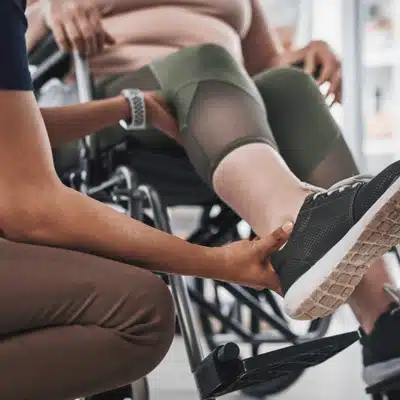
If conservative treatments haven't provided adequate pain relief and joint problems significantly limit your daily activities, joint replacement surgery might be your next step. This effective procedure has helped millions of people return to active, comfortable lives.
The decision requires careful consideration of your symptoms, lifestyle goals, and overall health. Many patients report wishing they had pursued surgery sooner, given the dramatic improvement in their quality of life.
Schedule a consultation with an orthopaedic surgeon who specializes in joint replacement. They can evaluate your specific situation and discuss whether surgery is appropriate for you. Every patient is unique, and your surgeon will consider all factors before making recommendations.
Don't let fear hold you back from exploring your treatment options. Joint replacement surgery has excellent success rates and continues improving with new technologies and techniques. The procedure has evolved significantly over recent decades.
Take action today - contact us to discuss how this proven procedure could help you return to pain-free living and the activities you love.